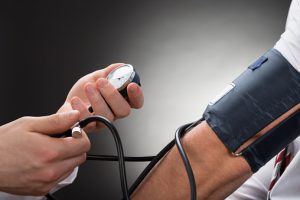
The study centered on assessing the prevalence of masked hypertension—that is, hypertension that is not detected in a medical setting. Individuals with masked hypertension have healthy scores when their blood pressure is measured in a doctor’s office, but when measured at home, their levels are often higher and in the hypertension range. Because of this, detecting high blood pressure has become more difficult. To diagnose masked hypertension, patients are required to self-report blood pressure levels when measured outside of the doctor’s office, or wear an ambulatory blood pressure monitor to track and record changes over a 24-hour period.
As this condition is so easily missed, there was a need to research just how many individuals are affected by it. Dr. Schwartz and his team analyzed their own database at Stony Brook, as well as the data obtained from a U.S. government survey, to compile a larger set of data. After reviewing the information, they concluded that 12 percent of Americans 21 and older have masked hypertension, a number that translated into one in every eight adults. Masked hypertension is a risk factor for issues such as heart disease, organ damage, and even death, and it may be even more dangerous because it is not detected as easily as regular hypertension.
Increased testing for masked hypertension is necessary, as many of those affected are not aware that they have it and therefore are not given proper medical attention. Dr. Rajiv Jauhar, chief of cardiology at North Shore University Hospital, stressed the need for better diagnostic methods for masked hypertension, stating, “We are not adequately treating or educating these patients to the risks of hypertension. They are not being treated with the right drugs or taught about the importance of a low-salt diet.” As so many adults are affected by masked hypertension—although they are unaware—more research must be conducted in order to identify other warning signs or risk factors of the issue so that patients may be better educated and treated.